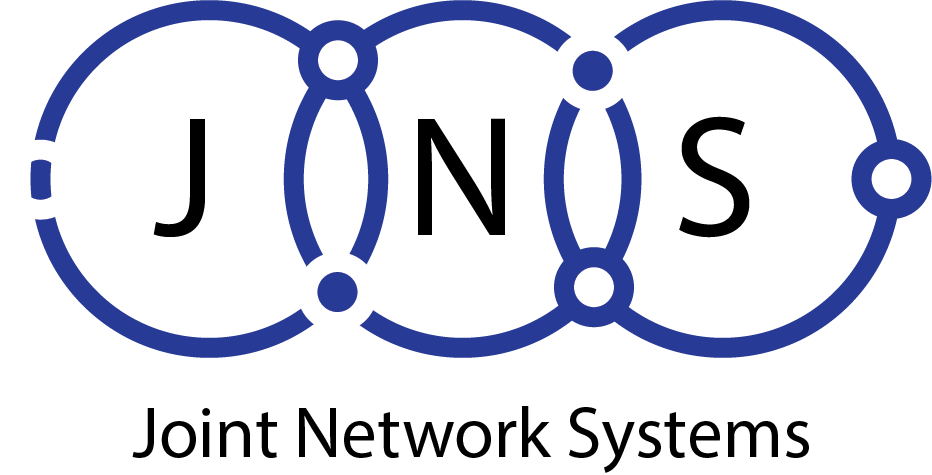Achieving Low Latency in Different Types
of Wireless Networks Requires an End-to-end Focus
Moving targets are those with low latency. They are higher for applications that have low throughput requirements than for those with higher throughput requirements. Latency is generally a function the network design. Radio latency should be considered along with end-to-end IP latency, round-trip delay and other network factors. A major contributor to latency is shared between 5G, WiFi and Cisco Ultra-Reliable Wireless Backhauls (URWB). The lower the latency, the closer the applications are to the data centers, clouds or network edge.
Fast Networks Requirements Vary by Application
VoIP users are fine with 150 milliseconds latency in one direction. This is because it isn’t noticeable and can be ignored by other users. WebEx and Microsoft Teams are collaboration tools. AR/VR and AR/VR require sub-50 millisecond bidirectional response times. Wireless connections are required to operate an Autonomous Mobile Robot or Automated Guided Vehicle in a factory. Some closed-loop process control traffic, however, requires a sub-20 ms response time in a high throughput network.
How Can Latency be Calculated
End-to-end IP latency can be calculated in one direction. It is measured from the wireless device to the IP transport network, wireless network, and application server. Round-trip Time (RTT), also known as the time it takes to ping a network, is calculated. The closer proximity of wireless applications makes it easier to achieve lower RTT latency.
When calculating end-to end IP latency it is important to take into account the typical round trip time (RTT latency) between an end user (or cloud provider) and a content distribution network provider (CDN). A network design should aim for 150ms RTT latency. This means that the time between each segment of the network or building block, from the local device to the application, must be calculated. The device connects to the local wireless network, which has its over-the air latency. Data is then transited through public and private IP infrastructures, including routers, switches, firewalls and firewalls along the round-trip path. In order to calculate overall latency, it is important to consider the amount of time needed before an application’s response is sent back.
How Various Wireless Standards Handle Latency
Advanced 5G services, such as 5G Enhanced Mobile Broadband and 5G Ultra Reliable Low Latency Communication (URLLC), include optimizations at each step of the radio hardware, uplink and downstream transmission processes. Radio features now allow for low latency communications. This variable transmission time interval (TTI) can be scaled from 1ms to 140 microseconds depending on whether low latency in URLLC or spectral efficiency are the main goals. The User Plane Function (UPF), which is used to connect the 5G network’s mobile infrastructure to the data network, receives IP packets over a tunnel.
Wi-Fi is strictly regulated in all countries, even though it operates on unlicensed frequencies. To avoid interference between users, local regulations set maximum power levels for access points. This determines signal strength, range, coverage, penetration and coverage. The Wi-Fi protocol’s next generation is expected to improve its determinism and allow for better latency control in network design.
While 5G and Wi-Fi use different types of encryption, IP packets within a WiFi network move similarly from access points to wireless radio networks and through tunnels to a wireless controller (WLC). A Wi-Fi WLC should be as short as possible if an application requires low latency.



Cisco Ultra-Reliable Wireless Backhaul is a wireless WAN backhaul technology derived form Wi-Fi. It can be used to support mobile networks environments and provides reliable, low-latency, long-range, high-bandwidth connections. Endpoints moving at high speeds are handled with zero-delay handoffs (like trains, subways, and vehicles). The Cisco URWB segment operates in unlicensed frequencies and requires a suitable design to control latency, fast handover, and in less than 5 ms. The end-to-end IP infrastructure that begins at the Cisco URWB gateway works in the same way as Wi-Fi topologies and 5G topologies.
Recent improvements provide uninterrupted connectivity to fast-moving devices via redundant paths that send high-priority packets over redundant paths. Cisco’s Multipath Operations (MPO), a patent-pending technology, can duplicate protected traffic up 8x and avoid common paths. It also works with hardware availability to lower latency and higher availability, which limits interference and hardware failures.
Low latency can mean different things for different applications, and different solutions are required. Based on your company’s strategy, and the use cases of your company, the right network design can lower latency to reach desired targets.
Radio latency should be considered in relation to end-to-end IP latency as well as the round-trip delay. There are many factors that can lower latency. Cisco URWB, 5G, WiFi and Cisco Wi-Fi all show that the more applications are located closer to the place where the data is being processed (either in a cloud, data center or network edge), the lower the likely service latency.
Read the white paper for more information:
Architecting for End-to-End Low Latency in Wireless Networks
About JNS
As an IT Services company located in Miami and serving all of South Florida. We deliver wireless technology solutions for every venue. Together with our wireless partner Cisco Systems we are able to meet the demands of today’s wireless workforce both in the office and in public venues.
Call is today to learn more about a solution that is right for your project or business.


Achieving Low Latency in Different Types of Wireless Networks Requires an End-to-end Focus
Moving targets are those with low latency. They are higher for applications that have low throughput requirements than for those with higher throughput requirements. Latency is generally a function the network design. Radio latency should be considered along with end-to-end IP latency, round-trip delay and other network factors. A major contributor to latency is shared between 5G, WiFi and Cisco Ultra-Reliable Wireless Backhauls (URWB). The lower the latency, the closer the applications are to the data centers, clouds or network edge.
Fast Networks Requirements Vary by Application
VoIP users are fine with 150 milliseconds latency in one direction. This is because it isn’t noticeable and can be ignored by other users. WebEx and Microsoft Teams are collaboration tools. AR/VR and AR/VR require sub-50 millisecond bidirectional response times. Wireless connections are required to operate an Autonomous Mobile Robot or Automated Guided Vehicle in a factory. Some closed-loop process control traffic, however, requires a sub-20 ms response time in a high throughput network.
How Can Latency be Calculated
End-to-end IP latency can be calculated in one direction. It is measured from the wireless device to the IP transport network, wireless network, and application server. Round-trip Time (RTT), also known as the time it takes to ping a network, is calculated. The closer proximity of wireless applications makes it easier to achieve lower RTT latency.
When calculating end-to end IP latency it is important to take into account the typical round trip time (RTT latency) between an end user (or cloud provider) and a content distribution network provider (CDN). A network design should aim for 150ms RTT latency. This means that the time between each segment of the network or building block, from the local device to the application, must be calculated. The device connects to the local wireless network, which has its over-the air latency. Data is then transited through public and private IP infrastructures, including routers, switches, firewalls and firewalls along the round-trip path. In order to calculate overall latency, it is important to consider the amount of time needed before an application’s response is sent back.
How Various Wireless Standards Handle Latency
Advanced 5G services, such as 5G Enhanced Mobile Broadband and 5G Ultra Reliable Low Latency Communication (URLLC), include optimizations at each step of the radio hardware, uplink and downstream transmission processes. Radio features now allow for low latency communications. This variable transmission time interval (TTI) can be scaled from 1ms to 140 microseconds depending on whether low latency in URLLC or spectral efficiency are the main goals. The User Plane Function (UPF), which is used to connect the 5G network’s mobile infrastructure to the data network, receives IP packets over a tunnel.
Wi-Fi is strictly regulated in all countries, even though it operates on unlicensed frequencies. To avoid interference between users, local regulations set maximum power levels for access points. This determines signal strength, range, coverage, penetration and coverage. The Wi-Fi protocol’s next generation is expected to improve its determinism and allow for better latency control in network design.
While 5G and Wi-Fi use different types of encryption, IP packets within a WiFi network move similarly from access points to wireless radio networks and through tunnels to a wireless controller (WLC). A Wi-Fi WLC should be as short as possible if an application requires low latency.



Cisco Ultra-Reliable Wireless Backhaul is a wireless WAN backhaul technology derived form Wi-Fi. It can be used to support mobile networks environments and provides reliable, low-latency, long-range, high-bandwidth connections. Endpoints moving at high speeds are handled with zero-delay handoffs (like trains, subways, and vehicles). The Cisco URWB segment operates in unlicensed frequencies and requires a suitable design to control latency, fast handover, and in less than 5 ms. The end-to-end IP infrastructure that begins at the Cisco URWB gateway works in the same way as Wi-Fi topologies and 5G topologies.
Recent improvements provide uninterrupted connectivity to fast-moving devices via redundant paths that send high-priority packets over redundant paths. Cisco’s Multipath Operations (MPO), a patent-pending technology, can duplicate protected traffic up 8x and avoid common paths. It also works with hardware availability to lower latency and higher availability, which limits interference and hardware failures.
Low latency can mean different things for different applications, and different solutions are required. Based on your company’s strategy, and the use cases of your company, the right network design can lower latency to reach desired targets.
Radio latency should be considered in relation to end-to-end IP latency as well as the round-trip delay. There are many factors that can lower latency. Cisco URWB, 5G, WiFi and Cisco Wi-Fi all show that the more applications are located closer to the place where the data is being processed (either in a cloud, data center or network edge), the lower the likely service latency.
Read the white paper for more information:
Architecting for End-to-End Low Latency in Wireless Networks
About JNS
As an IT Services company based in Miami. We deliver wireless technology solutions for every venue. Together with our wireless partner Cisco Systems we are able to meet the demands of today’s wireless workforce both in the office and in public venues. With an experienced network staff and our IT Services team JNS is able to design the network you need. Call is today to learn more about a solution that is right for your project or business.


